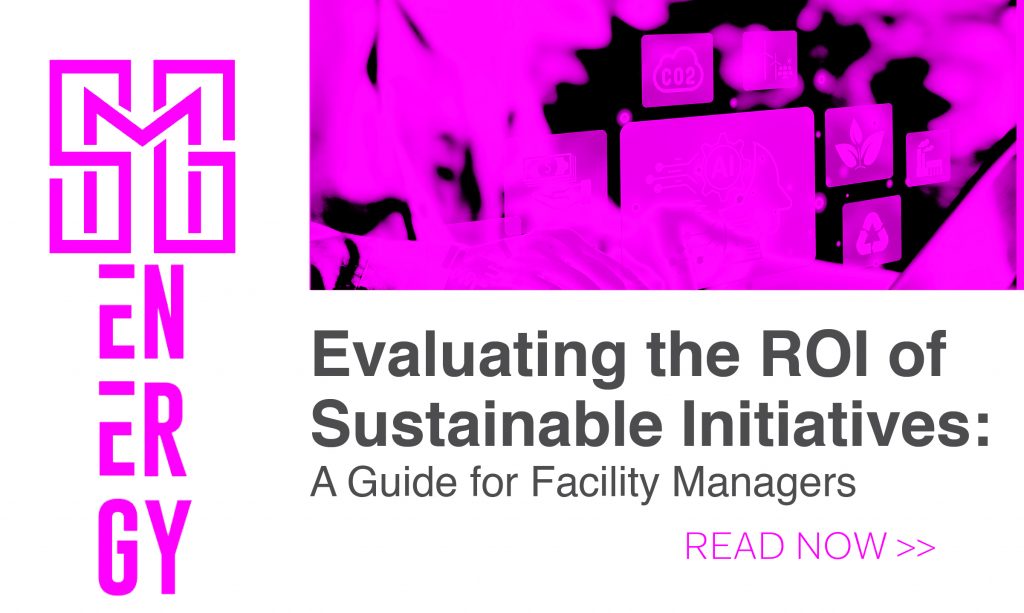In the past two decades, concern has heightened over the effects of businesses on important societal issues. That led to the creation of the environmental, social, and governance (ESG) investing plan. Socially conscious investors look at the ESG plan, which is a set of standards for a company’s behavior in those three areas, to decide on whether to invest in that company. This article focuses on the “E” or Environment part of ESG and more specifically another “E” — energy — which is a pressing environmental concern.
Energy management, which is the tracking and adjusting of energy consumption to conserve usage in a building, is a crucial part of a company improving the environmental standards in the ESG plan. This blog also examines an energy management plan’s environmental benefits and challenges. Also, it will show you how a committed partner, like SMG Energy, can help a company with a distributed portfolio identify and follow through on energy management goals that will be good for the environment and contribute to the company’s overall ESG goals and objectives.
Environmental Benefits of Energy Management
When creating an energy management plan, you will find there are plenty of ways to save energy. From the simplicity of changing a light bulb to the replacement of inefficient equipment to the installation of renewable energy sources, your company can make a positive impact on the environment. Let’s look at some ways to manage energy usage and the benefits they can bring.
Cutting Back on Consumption
One of the first areas to approach in managing energy is reducing energy consumption. The initial step can be turning something off or putting it into sleep mode when it is not in use. If no one is using a particular building area, see if the heating or air conditioning can be adjusted accordingly or turned off. If the air conditioning or heater is in use, ensure there are no open doors.
These can be simple, yet highly effective procedures to save energy. All these changes mean your company is using less energy, resulting in fewer fossil fuels being used to create that energy and fewer greenhouse gas emissions (GHG) being released into the atmosphere by those “energy hogs” throughout your portfolio. These procedures will also reduce your energy bill and save you money.
Using Energy Audits and Retrofits to Reduce
Another early step is to do an energy audit. These audits can identify areas within electrical systems, wiring, ventilation systems, and other parts of the facility where energy is being lost to the outside or not being used where it’s needed more. The audit empowers you to make informed decisions regarding which areas within a facility and/or equipment to retrofit. For instance, maybe an HVAC unit(s) is reaching end-of-life,, and it’s time to replace it with a much more energy-efficient model. In another case, the windows allow too much cooling or heating to escape and you need to consider applying an exterior window “film” or replace the window(s) with better-insulated, double-paned versions. These changes also help lower energy costs while reducing carbon emissions.
Opting for Renewable Energy
The many recent advancements in the technology of renewable energy sources, such as solar or wind power, make them a much more desirable option these days. Also, prices are dropping on the initial equipment investments in solar and wind power. It’s a win-win situation because not only are you saving on your energy bills, but you are reducing reliance on fossil fuels and helping to reduce emissions. Another form of renewable energy is clean distributed generation, such as combined heat and power (CHP). These CHP systems provide on-site electric power, heating, and cooling from a single fuel source. Unlike conventional power generation plants, these systems utilize the waste heat they produce.
Tracking and monitoring
As part of their energy management strategy, companies must track and monitor their energy use. Once the company implements changes to control its energy use, it’s crucial to stay on top of them to identify which areas need readjusting. Regular tracking and monitoring will also alert you when something is reaching a critical stage and may need to be replaced before it breaks down and costs much more time, energy, and money.
Meeting Sustainability Goals, Standards
Sustainability encompasses many concepts — such as resource conservation, pollution reduction, limiting waste, and minimizing water use, to name a few — and energy management sits right in the center of sustainability. A successful energy management plan can make a huge difference in environmental sustainability. It also communicates to team members,, customers, and investors that your company cares about more than just the bottom line and wants to ensure future generations have those resources.
Potential Challenges of Energy Management
A strong energy management plan takes work and will have challenges along the way. Let’s take a look at a few of them:
Lack of Knowledge and Expertise
While some energy-efficient practices can be implemented with little or no advanced know-how, many involve more complicated techniques that need a detailed understanding to be effective. But there are a couple of options that can help solve that concern. First, there are online courses that can educate managers on the ins and outs of energy management. Second, a company can hire a partner specializing in energy management who can help guide you and your plan in the right direction by providing expert guidance or taking over all or part of your energy management plan.
Financial Resources Can be Limited
Some areas where the most energy can be conserved need an initial cash investment. Buying new equipment to replace the older, less-efficient versions, such as HVAC units or LED-lighting systems, smart sensors, energy mamagement systems (EMS) or taking new paths with renewable energy sources can be a costly investment at the start. If your company has difficulty obtaining financial resources to invest in energy management initiatives, you may need to come up with a list of what initiatives provide the best energy efficiency for the best price. In some cases, utility rebates or incentives can help subsidize the more expensive projects.
Unreliable Data is Insufficient and Unacceptable
It is possible to look at the “payment due” line on an energy bill to see what you are paying, but that is just one of many numbers in the complex world of energy management. You have to delve deeper. Amassing and understanding multiple data pools are crucial to making the overall energy management plan successful. For companies without the expertise and workforce to accomplish that, some third-party partners specialize in this area and have the ability and platforms to help guide the entire energy management plan in the right direction.
Technology and Infrastructure Constraints
Technology is the wave of the energy management future. It permeates just about every type of energy management practice. With technology always making advancements, it can take a lot of work to figure out what you need and what it will cost to develop a reliable energy management plan. If both of those concerns are overwhelming you, having an expert partner well-versed in energy management is a path you might need to take if you are genuinely dedicated to saving energy and making an impact on achieving your ESG initiatives. Like technology, your infrastructure also needs to be updated. It is the cornerstone on which your facilities and processes are built. If that crumbles, it’s not usually too long until other facets of your company will also begin to degenerate.
Motivating Team Members to Support Changes
When implementing an energy management stratregy, it is inherent that there will be more work to do to ensure that the system is developed, put in place, and monitored to check on its success. When it takes a while to see the result of those energy improvements or the importance of those fixes is at a level that is difficult for many to visualize, it can leave employees feeling little motivation to make it a success. That’s why it is crucial for team leaders to communicate that these changes can positively affect the environment. Asking team members if they have suggestions can also help them realize they are indeed part of making the workplace and the world a better place.
How Working With SMG Energy Can Help Overcome Challenges
If actions can speak louder than words, actionable strategies can be the first step to making a whole lot of noise in energy management. And if you are looking to find a partner that has the right actionable strategies and proven ideas, look no further than SMG Energy. Let’s review some of the many ways SMG can help you.
- Discovering insights into facilities: SMG studies your building’s energy patterns and provides your company with data-driven insights to make your facility more energy efficient. They come up with ways to save money, reduce your company’s carbon footprint, and help meet sustainability goals within the framework of their broader ESG initiatives.
- Increasing your data pool: With real-time asset intelligence and performance data from across a distributed portfolio, SMG will significantly increase your energy data and allow you to spot where energy efficiency can make an impact.
- Taking technology up a notch: SMG can leverage your existing EMS technology and/or bring to bear comprehensive, cloud-based EMS platforms to support energy management and building automation, which includes penetrating analytics and data-driven insights to support your plan.
- Offering a dedicated and knowledgeable staff: With highly focused experts, SMG can light your way to understanding energy management.
SMG Can Give Your Energy Strategy the Charge it Needs
One of the significant ways to reduce your carbon footprint and make an impact on ESG initiatives is to prove what actions you have taken with your energy management plan. You will want to document your efforts in reducing your carbon footprint. That will not come easy and will take time and resources. You can ease some of that concern and responsibility by teaming up with SMG Energy. Let SMG help you make an impact on your company and the environment. Check out our website and get a free energy assessment.





